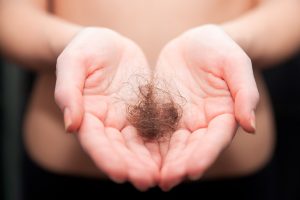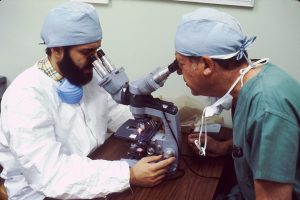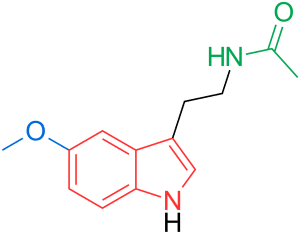How Melatonin can Help in Hair Loss and Hair Growth
Every day we experience hair loss at an average of 50 to 100 strands a day. At times we may notice a substantial amount of hair loss from daily brushing, regular washing, and when we wake up in the morning.
If you notice your hair falling at an alarming rate, probably noticing it falling off in clumps or in great numbers when you brush your hair, when you remove hair accessories, or just by simply stroking it, you may be experiencing an early onset or probably showing symptoms of hair loss.
Facts About Hair Loss
Alopecia is the medical term for hair loss, it is a condition that affects both men and women. Its effects can be devastating and greatly affect ones self-confidence and self-esteem. Some known causes that contribute to hair loss is exposure to high levels of physical and emotional stress and a condition that attacks the autoimmune system called Alopecia Areata. Other known types of medical hair loss are:
- Androgenic Alopecia is the most common type of hair loss
- Alopecia Universalis is the loss of hair in the entire body including hair inside the nasal cavity and eyebrows.
- Alopecia Totalis is another type of hair loss in the entire body normally seen in the form of patches and is usually temporary in nature.
- Ophiasis is a type of baldness that leaves a wave-like pattern all over the head.
- Traction Alopecia is common amongst people who put excessive stress on the hair follicles due to continuous tension or pulling brought about by long periods of hair styling. This is common amongst those who tie their hair into a ponytail or pigtails, or have cornrows or dreadlocks.

Hair loss has also been attributed to some hereditary factors present in our parents. Male pattern baldness is most common for men who have fathers who are also bald, while baldness in women is attributed to the fact that the primary baldness gene is present in the “X” chromosome or the gene that is present in females.
Other medical findings about hair loss suggests that hair loss is a possible symptom of an early onset of some types of cancer.
Pregnancy is also known to cause balding as it increases the number of female hormones among women, inflammation is also another contributing factor for clinical baldness. Other medical studies also suggest that improper nutrition, nutrients deficiencies, and limited intake of food also contribute to hair loss.
Treatment for Hair Loss
Androgenic Alopecia or the most common form of hair loss can usually be treated or addressed through the use of laser therapy or with medical intervention.
One common treatment method for baldness is the intake of oral finasteride, which addresses the issue of male pattern baldness. Oral finasteride is usually considered as the first course in addressing the issue of baldness in men. It is known as well as a treatment for Benign Prostatic Hyperplasia or BPH. The way finasteride works in preventing hair loss is by blocking dihydrotesterone or DHT, which is the hormone that causes baldness in men. Some common side-effects of oral finasteride treatment is impotence, premature ejaculation in men, tenderness and swelling of the breasts, swelling in the hands and feet, dizziness, and weakness.
Topical Minoxidil as a treatment for baldness
Another treatment course for baldness is the application of topical Minoxidil. This treatment comes in the form of foams, serums, sprays, shampoos, and conditioners that are directly applied on the affected parts. Minoxidil works by improving blood flow into the scalp providing nutrients in the hair follicles causing increased growth rate of hair as well as an improvement in hair density. Some common side effects of Minoxidil treatment are the feeling of a burning sensation on the scalp, the presence of unwanted hair growth in other areas of the body, and dizziness.

Recent clinical studies have found the application of topical Melatonin as an alternative agent for the treatment of the most common type of hair loss.
Melatonin Treatment for Baldness
Melatonin is a hormone secreted by the pineal gland. This hormone has been produced and marketed in pill form to help regulate sleep-wake cycles in patients with temporary sleep pattern problems.
From January to April 2003 a double-blind, placebo-controlled cross-over study was conducted at the Forenap Centre Hospitalier in Rouffach, France on eight healthy women to assess the clinical and biological tolerability of cosmetic melatonin. One group of this study were applied with a 0.0033% cosmetic melatonin solution once daily on their scalp each night before bedtime, while another group were treated with a placebo solution following the same protocol as the other group.
Within the duration of the study, all the participants were monitored every 14 days for any abnormal increase or decrease in their blood pressure and heart rate as well as any observable increase or decrease in their endogenous melatonin secretions. Based on the results of the electrocardiogram readings collected from all of the participants at the end of this study, showed no significant increase in blood pressure and heart rate for all the participants. But according to clinical laboratory tests for serum melatonin levels done on all participants, it was observed that a gradual increase in blood serum melatonin levels, which was vital for hair growth and restoration, was noted on the participants who were treated with the cosmetic melatonin solution.
Thus concluding that treatment with topical Melatonin is generally tolerable and hardly show any adverse reaction as compared to that of placebo.
(Source: Macher JP. Pharmacokinetics and clinical and biological tolerability of repeated topical application of a melatonin-containing cosmetic hair solution in healthy female volunteers. A double-blind, placebo-controlled, cross-over design study. Clinical Study Report. MEL-COS-1. Data on file. Asatona AG, Switzerland)

Another study was conducted at the Istituto Dermatologico Europeo (European Dermatologic Institute) in Milan, Italy. This was an open-label, clinically controlled study to determine the efficacy and therapeutic benefits of topical Melatonin solutions. The test was conducted on 35 men showing early signs of male pattern baldness, with ages ranging from 18 to 41 years old. The participants were divided into two groups and were tested for a period of 6 months each, the study went on from April 2004 up to April 2005. Each of the participants of this test were treated with a melatonin hair solution applied to their scalp once daily every evening. During the duration of the test each participant’s hair count and hair density were recorded at 3-month and 6-month intervals.
The result of the study showed this positive response:
The result of the study showed that an increase of hair count was noted on 54.8% of the participants after 3 and 6 months, an improvement on the hair density and hair diameter was also noted on 54.8% and 58.1% respectively of the participants after 3 and 6 months.
To those participants who showed a positive response, a 29.2% increase in hair count was noted after 3 months (3 vs 0 months) and an increase of 42.7% after 6 months (6 vs 0 months).
The increase in hair density was recorded at 29.2% after 3 months and 42.7% after 6 months. During the duration of this test, there was an observable improvement in the hair loss of the participants who reacted positively to the test product.
Results showed that 26.6% of the participants showed improved hair loss after 30 days, and then 48.2% showed improvement after 90 days, and another 32.1% after 120 days.
In addition, the percentage of patients exhibiting no change in hair loss from Day 30 to Day 90 decreased from about 73.3% to 48.2% respectively, and this value was maintained up to Day 180.
Hair loss continued in only 3.4% of the participants after 90 days and in 19.3% after 180 days.
This test concludes that continuous use of topical Melatonin solutions can greatly improve the hair count and hair density of patients going through early stages of baldness.
(Source: Lorenzi S, Barbareschi M, Caputo R. Efficacy and safety of a melatonin-containing cosmetic hair solution in the treatment of early stages of male androgenic alopecia. Open study with Trichoscan evaluation. Report/Protocol. MEL-COS-AS03. Data on file. Asatona AG, Switzerland)
Melatonin and the Anagen phase
Studies conducted about topical Melatonin treatment for baldness showed that the natural effects of the hormone to hair follicles influences the normal hair cycle during the Anagen phase (active growth phase of hair follicles where the hair roots divide rapidly) promoting constant growth of new hair strands on affected areas. Since Melatonin is also known as a powerful anti-oxidant, it provides protection on hair strands against free radicals that causes cell destruction in the hair.
About NutraM product
NutraM is one such type of topical Melatonin out in the market. This product not only utilizes the full potential of Melatonin in support of hair growth but also naturally blocks dihydrotestosterone or DHT and helps in reversing the effects of thinning hair. NutraM is a totally greaseless formula that leaves no residue on the hair and scalp allowing it to be easily applied and styled into the hair.
Among the known methods of treatment for hair loss, topical Melatonin treatment has shown the most potential for success in patients suffering from Androgenic Alopecia. It has also shown the most improvement in preventing continued hair loss and thinning of the hair.
